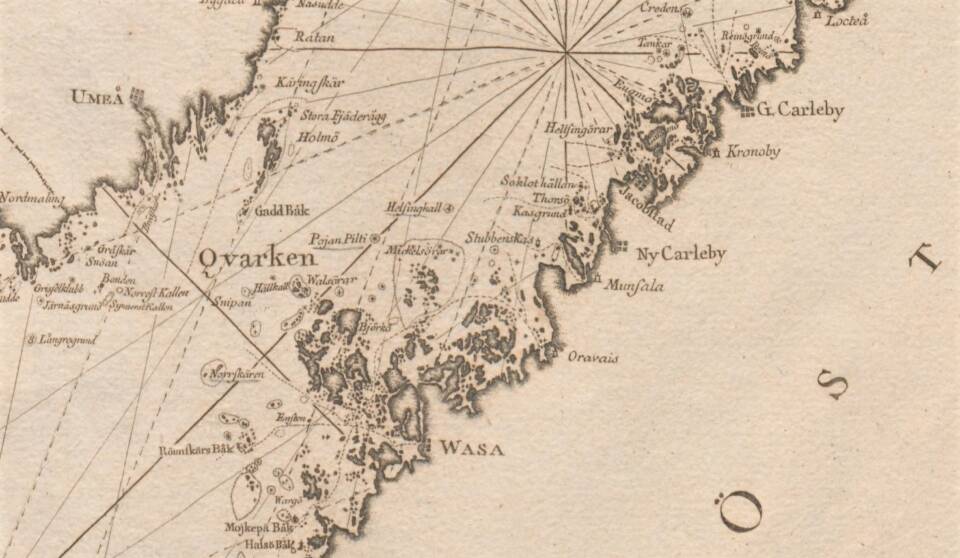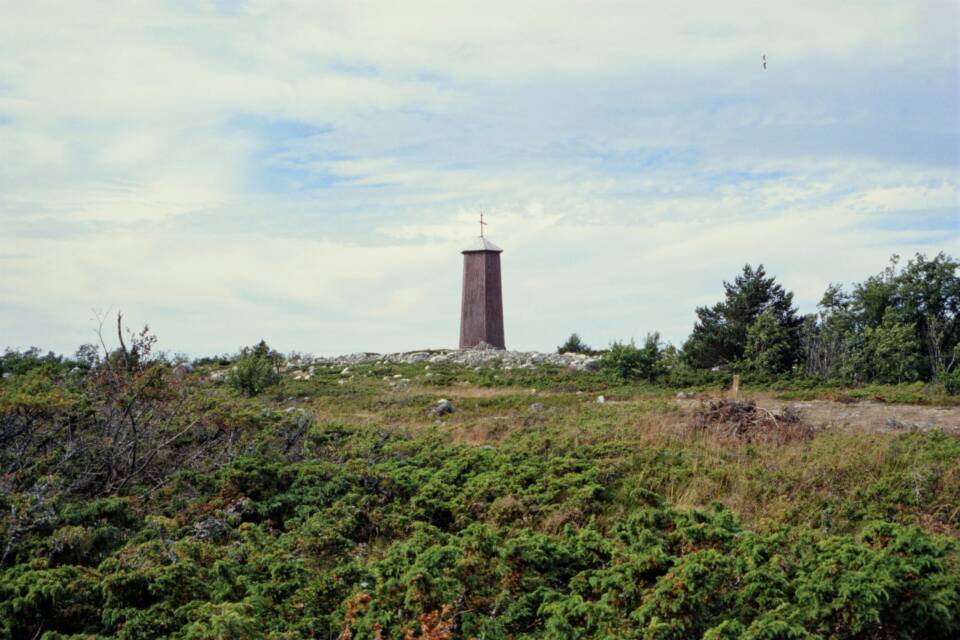
Stubben has guided shipping for centuries
Stubben Lighthouse is located about 18 kilometres west as the crow flies from the centre of Uusikaarlepyy. The lighthouse community has formed on two adjacent islands, Lillskär and Storskär, which have served as a fishing base since the 16th century.

There was daymark beacon on Storskär already in the 1790s. At the top of the beacon, a fire was burned in an iron basket hung from the end of a pole. The island was redeemed by the Finnish Pilot Service in 1848. A small pilot station housing three pilots was also built near the daymark.
The first daymark beacon was replaced by a new one in 1857. It was built on the highest point of the island. This hexagonal structure still stands to this day. The lighthouse rises 16 metres above ground level and thus dominates the landscape of the island.
In the 1930s, the pilots were granted a new pilot station, of which only the ruins remain. The older pilot hut has been converted into a summer cottage. The fishing village in the eastern part of the island remained vibrant for a long time, particularly in summer.

A new pilot station was built on the nearby island of Lillskär
To replace the old pilot buildings on Storskär, a new combined pilot station and lighthouse were built on the adjacent island of Lillskär in 1954.
The rectangular tower has four floors, the top floor of which is the keeper’s watch room and the lamp room. The station was deserted when pilotage ceased, and the lighthouse was automated in the 1960s. After the end of pilotage activities, the lighthouse became a summer hotel for a time.

Learn about maritime cultural heritage and venture along the pilots’ paths
The Stubben lighthouse community is a great attraction for those interested in maritime history because there are various remnants of maritime navigational aids spanning several centuries. There are also many stone structures related to fishermen’s cabins and fishing activities on both islands.
It is also possible to walk along the paths cleared by fishermen and pilots and to discover various ancient remains, rock structures, and mysterious rock labyrinths, known as “giant’s gardens” (Fin. jatulintarha).
On the western shore of Lillskär Island, there is also a large rock mound which, according to a local story, hides a secret. If you wish to see the one who guards this secret, you must turn your back and throw a new stone over your shoulder onto the tall cairn.

Infobox
What is a “Giant’s garden”?
Translated from the Finnish name ”jatulintarha”, giant’s gardens are maze-like patterns or formations of stones in which one or more paths run from the edge to the centre. They are also known by the name Troy Town.
These mazes are built of stones approximately 20 cm in diameter on flat surfaces. Mazes vary from 5 to 24 metres in diameter. Most of the giant’s gardens are located in a marine environment in the archipelago and along the coast, often on rugged islets and far offshore.
The giant’s gardens cannot be accurately dated because no dateable material has been found in them. However, some could even be from the Bronze Age, as similar spiral patterns are known from artefacts of that period. This spiral pattern is also well-known from medieval church art.
Due to their locations, giant’s gardens are usually associated with maritime habits and livelihoods. They are believed to have been built by fishermen, pilots or sailors to guarantee good sailing weather or to secure good catches of fish. These mazes have also been linked to places where young people have played games and are known in Swedish as jungfrudans or “dance of the virgins”.

Important years
Why and how is this location protected?
With its buildings and ancient remains, the Stubben lighthouse community reflects not only the development of safer maritime shipping over the centuries but also the early fishing industry typical to the Ostrobothnian archipelago. For these reasons, the National Board of Antiquities has designated the islands as built cultural environments of national importance.
Stubben in the Finnish Heritage Agency’s register.(siirryt toiseen palveluun)
Vierailu
Saariin voi tutustua omalla veneellä.
Finnish Heritage Agency’s mapservice
P: 7052801, I: 259573(siirryt toiseen palveluun) (ETRS-TM35FIN)


